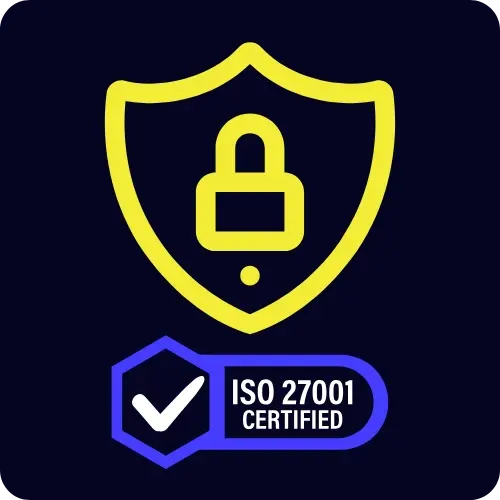XTM vs Smartling
Why leading localisation teams switch from Smartling to XTM
XTM Cloud gives you full control over your localisation ecosystem—without vendor lock-in. Unlike Smartling, XTM is vendor-agnostic and modular, so you can scale with your preferred partners, tools, and workflows while reducing costs and increasing translation quality.

Book your personalised demo
Book your personalised demo
Why feature-rich teams choose XTM for comprehensive localisation
Smartling covers the basics with website proxy translation and bundled services. XTM delivers comprehensive localisation management with advanced features that actually solve real business problems. Think translation memory that learns from your content, financial tools that track every penny, and connector integrations that automate your entire workflow. When you need features that scale with your business complexity, XTM provides the depth Smartling simply can't match.
Here are three reasons why
XTM's features win for localisation

Advanced translation memory and terminology management
XTM's concept-based translation memory uses AI-enhanced fuzzy matching to maximize content reuse and reduce costs. Smart Leverage technology identifies translation opportunities across projects. Smartling offers basic TM functionality without advanced reuse optimisation or cross-project leverage capabilities.
Comprehensive financial and vendor management
Built-in purchase order generation, vendor billing, license sharing, and detailed ROI analytics give you complete control over localisation spending. Smartling's bundled service model limits vendor choice and provides minimal financial management features.
.webp?width=300&height=300&name=1%20(1).webp)
Extensive integration and automation capabilities
Over 40 pre-built connectors integrate with your existing tech stack, whilst advanced workflow automation handles complex business processes. Smartling focuses primarily on web proxy integration with limited connector options for enterprise systems.
What's the difference between XTM and Smartling's feature approach?
Both platforms handle translation management, but their feature philosophies are completely different. Smartling prioritizes simplicity with bundled services and proxy-based website translation. Clean interface, limited customisation, perfect for teams wanting everything handled by one vendor.
XTM takes on comprehensive localisation requirements with deep feature sets across every aspect of translation management. Financial controls, advanced workflows, extensive integrations - all designed for organisations that need granular control over their localisation programmes.
Here's how their feature sets compare for localisation
XTM vs Smartling - Translation memory and terminology features
Translation memory and terminology management directly impact localisation costs and consistency. Advanced TM systems maximize content reuse whilst sophisticated terminology management ensures brand voice consistency across all languages and content types.

How Smartling handles translation memory
Smartling provides basic translation memory functionality with standard fuzzy matching capabilities. The system stores previous translations and suggests matches for similar content, but lacks advanced features for maximizing reuse across different projects or content types. Limited terminology management with basic glossary functionality.
How XTM maximizes translation memory value
XTM's concept-based translation memory goes beyond simple text matching to understand content relationships and context. Smart Leverage technology identifies translation opportunities across projects, content types, and time periods to maximize reuse and minimize costs.
The platform's AI-enhanced fuzzy matching considers context, metadata, and content structure to suggest more accurate matches. Advanced batch operations allow TM maintenance and optimisation across large content volumes.
XTM's translation memory features include:
- Concept-based TM with contextual understanding
- Smart Leverage for cross-project reuse optimisation
- AI-enhanced fuzzy matching with context awareness
- Batch TM operations and maintenance tools
- Advanced terminology management with concept relationships
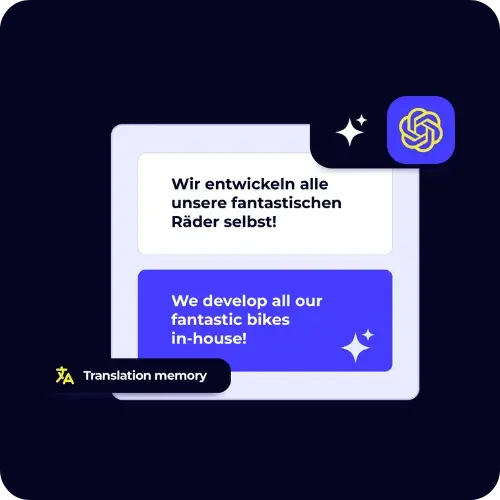
XTM vs Smartling - Financial management and cost control
Financial management helps organisations understand localisation spending, control costs, and demonstrate return on investment. Comprehensive financial features eliminate manual processes whilst providing visibility into vendor performance and project profitability.
.webp?width=300&height=300&name=10%20(2).webp)
How Smartling approaches financial management
Smartling operates primarily through bundled service pricing that combines platform access with translation services. This model simplifies vendor management but limits financial control and transparency. Organisations receive consolidated billing without detailed cost breakdowns or vendor management capabilities.
How XTM delivers complete financial control
XTM includes comprehensive financial management directly within the translation workflow. The platform automatically generates purchase orders when vendors accept projects, tracks costs in real-time, and provides detailed analytics on localisation spending across all projects and languages.
Advanced reporting shows translation memory leverage impact on costs, vendor performance metrics, and ROI calculations that demonstrate localisation programme value. Budget controls prevent cost overruns whilst automated billing reduces administrative overhead.
XTM's financial management features include:
- Automatic purchase order generation and vendor billing
- Real-time cost tracking with budget controls and alerts
- Translation memory leverage reporting showing cost savings
- Vendor performance analytics and payment tracking
- ROI dashboards with localisation programme value metrics
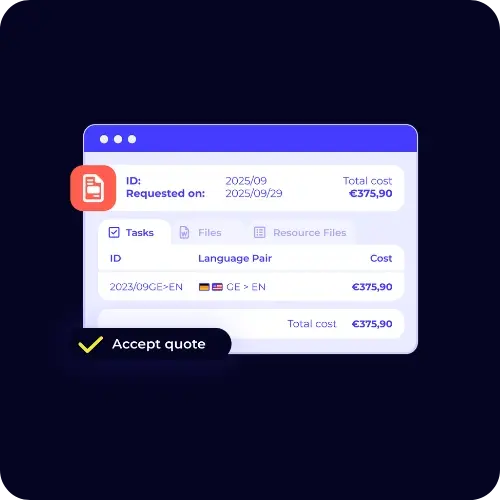
XTM vs Smartling - Integration and connectivity options
Integration capabilities determine how well your translation management system fits into existing business processes. Comprehensive connector libraries and API capabilities eliminate manual content handling whilst ensuring seamless workflow automation.
.webp?width=300&height=300&name=2%20(1).webp)
How Smartling handles integrations
Smartling focuses primarily on web proxy integration for website translation along with basic CMS connectors. The proxy approach automatically detects website content changes and initiates translation workflows, which works well for web-focused organisations but limits flexibility for complex content ecosystems.

How XTM connects everything together
XTM provides over 40 pre-built connectors covering major CMS platforms, marketing automation tools, ecommerce systems, and enterprise software. Advanced API capabilities enable custom integrations whilst webhook support provides real-time workflow automation.
The platform's connector framework supports complex content workflows including automated content detection, translation initiation, and publication back to source systems. Custom field mapping and metadata preservation ensure content integrity across system boundaries.
XTM's integration capabilities include:
- 40+ pre-built connectors for major business systems
- Advanced API framework for custom integrations
- Webhook support for real-time workflow automation
- Custom field mapping and metadata preservation
- Automated content detection and publication workflows
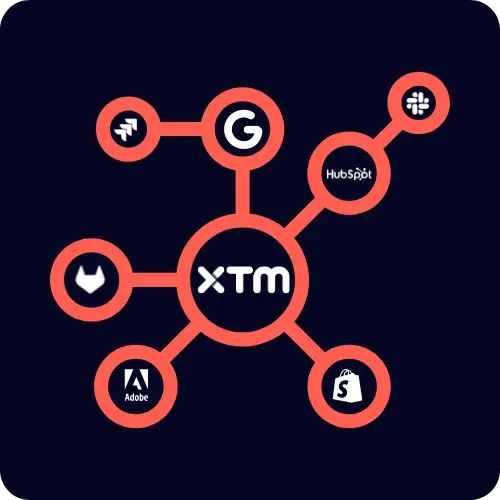
XTM vs Smartling - Workflow customisation and automation
Workflow customisation determines how well your translation management system adapts to unique business processes. Advanced workflow capabilities accommodate complex approval chains, regulatory requirements, and multi-stakeholder coordination.
How Smartling handles workflow customisation
Smartling provides simple workflow templates designed for web content translation. Standard approval stages work well for straightforward localisation processes but lack flexibility for complex enterprise requirements involving multiple review stages, regulatory approval, or non-linguistic workflow steps.
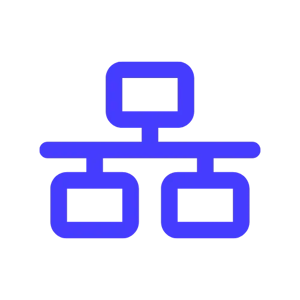
How XTM adapts to your business processes
XTM's workflow designer allows organisations to create sophisticated automation matching their exact business requirements. Drag-and-drop interface enables custom approval chains, conditional routing based on content type or language, and integration with external approval systems.
Advanced workflow features include non-linguistic steps for legal review, marketing approval, and regulatory compliance. Automated task assignment based on content complexity, language expertise, and workload balancing ensures efficient resource utilisation.
XTM's workflow customisation features include:
- Drag-and-drop workflow designer with conditional logic
- Non-linguistic workflow steps for business process integration
- Automated task routing based on content analysis and resource availability
- Multi-stage approval chains with role-based permissions
- External system integration for seamless business process flow
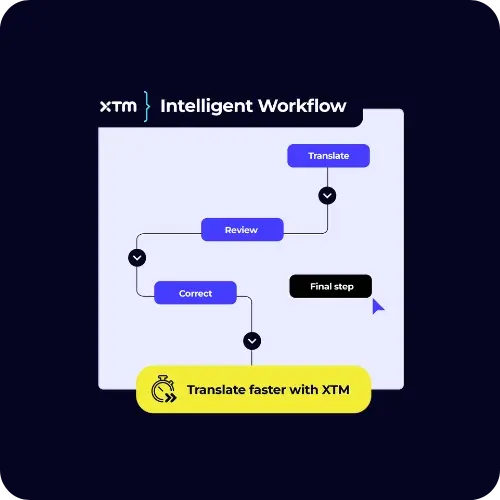
XTM vs Smartling - Security and compliance capabilities
Security and compliance features ensure localisation workflows meet industry regulations whilst protecting sensitive content. Advanced security controls provide audit trails, access management, and data protection for highly regulated organisations.
.webp?width=300&height=300&name=3%20(1).webp)
How Smartling handles security and compliance
Smartling provides standard SaaS security features including data encryption and basic access controls. The platform meets general security requirements but lacks advanced compliance features needed for highly regulated industries like healthcare, finance, or government sectors.
How XTM delivers enterprise-grade security
XTM's security framework includes ISO 27001 certification, comprehensive audit trails, and role-based access controls that meet strict regulatory requirements. Advanced data encryption, secure deployment options, and compliance reporting ensure protection for sensitive content.
The platform supports private cloud and on-premises deployment for organisations requiring data sovereignty. Detailed audit logs track every user action and content change whilst role-based permissions ensure appropriate access controls.
XTM's security and compliance features include:
- ISO 27001 certification with comprehensive audit trails
- Role-based access controls with granular permission management
- Advanced data encryption and secure deployment options
- Compliance reporting for regulated industries
- Private cloud and on-premises deployment capabilities
